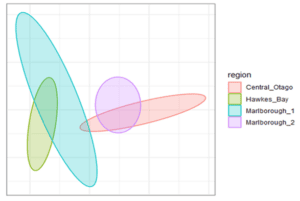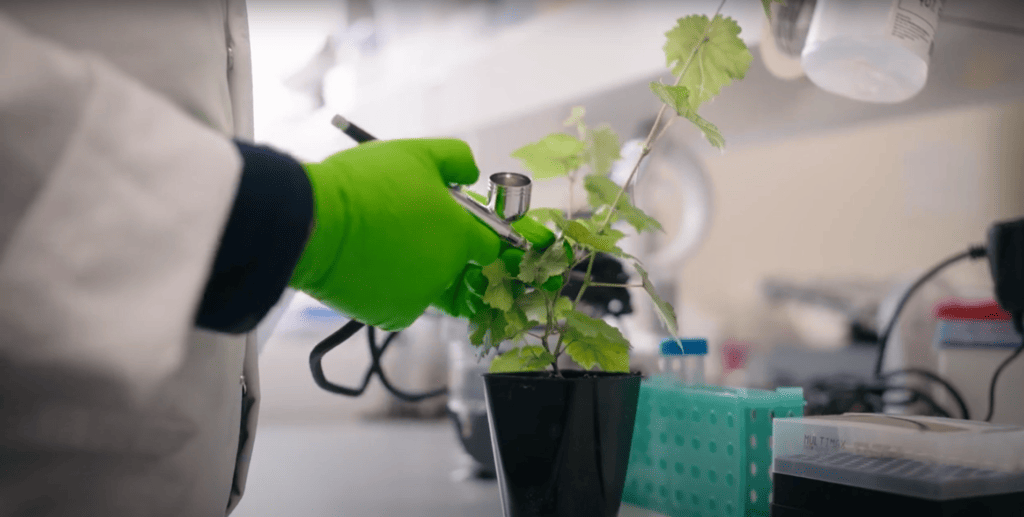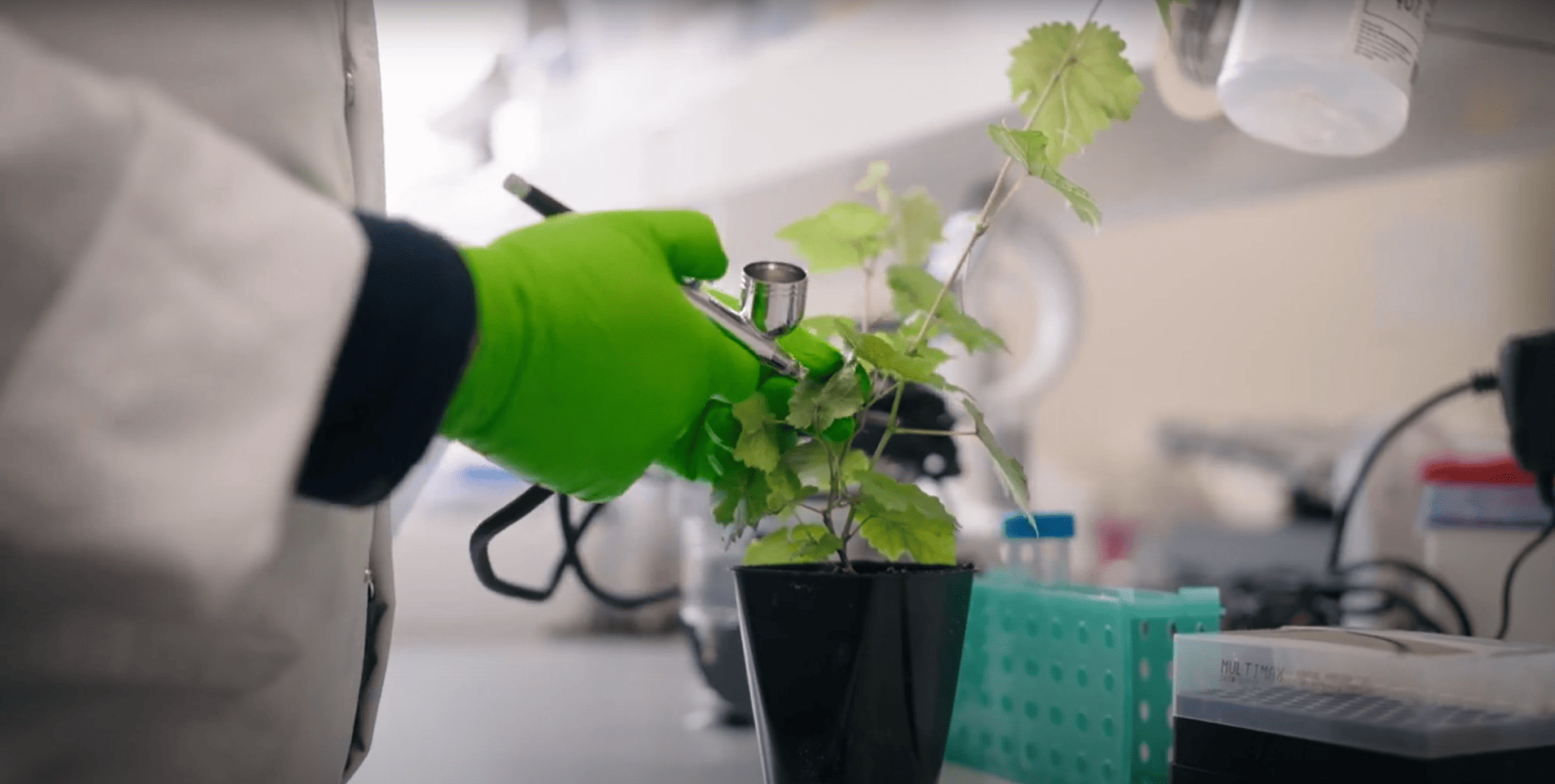Dr Ellie Bradley, Dr Cen Liau, Bragato Research Institute
Over the coming decades, the changing climate is expected to bring seasonal variability, increased frequency of extreme weather events, and heightened disease pressure. Growers are at the mercy of the environment, and while every effort is made to plant varieties that are resistant to pathogens and will do well in the volatile warming climate, grapevine breeding is a time-consuming process.
But what if there were a way to improve the resilience of the existing vines in a way that was specific, yet adaptable? That is exactly what researchers in Bragato Research Institute’s (BRI) Grapevine Improvement team hope to map out with the Tuned Vines project. The aims of this project are two-fold: to understand how grapevine genes are turned on/off (epigenetics) in response to environmental cues, and to investigate methods to regulate grapevine genes in a specific and reversible manner.
Together, these efforts could provide us with the knowledge and capability to develop a tool to ‘tune’ grapevines to achieve desirable outcomes, such as disease resistance and drought tolerance.
What is epigenetics?
Given that plants can’t move away from stressful environments without human intervention, they develop special ways to face these challenges. One of the way plants adapt is through a process called epigenetics, which involves turning certain genes on or off at specific times and conditions.
For grapevines, this also translates as terroir effect, where the same vines grown in different conditions can develop different grape characteristics. A key feature in epigenetic process is the addition or removal of small ‘tags’ of methyl groups to the DNA, which when added may turn genes off, while when removed may activate gene expression.
Mapping DNA methylation
To understand grapevine epigenetics, we started by investigating the terroir effect on DNA methylation. With the support from growers, we collected samples from Sauvignon Blanc ‘Mass Select’ clone from fifteen vineyards across three different regions in New Zealand (Hawke’s Bay, Marlborough, Central Otago) and mapped genome-wide DNA methylation profile using BRI’s PromethION sequencing platform. Initial results showed a clear distinction in DNA methylation patterns between Hawke’s Bay and Central Otago Sauvignon Blanc. Interestingly, Marlborough Sauvignon Blanc showed two different DNA methylation profiles, but the differences between Marlborough with the other two regions were less pronounced.

Figure 1. Clustering of SB from different regions in NZ based on variation in DNA methylation profile.
More work is still needed to understand the significance of these results and how we can leverage this knowledge for grapevine improvement purposes.
Epigenetic responses to stress
The second phase of this workstream is also underway this growing season by setting up experiments to investigate the epigenetic response of grapevine when exposed to environmental stress such as drought and disease. We worked together with the Marlborough Grape Growers Cooperative and collected samples from their drought trial sites, in addition to setting up experiments in our Lincoln-based Grapevine Improvement lab. From these, we are hoping to identify which part of the grapevine genome is activated/silenced during these stresses which can be potentially used as a target for the extension of the second workstream of this project in the future.
RNA-based technology
The second workstream in the Tuned Vines project uses the latest techniques in epigenetic technology to investigate the potential of an application that would serve to temporarily silence selected genes to provide specific benefits. The goal of this workstream is to identify a path to using RNA-based technology as a tool to modulate the expression of grapevine genes in a way that is specific, reversible, and adaptable. Potential outcomes could include priming a grapevine to improve water use efficiency when a drought period is expected.
The specificity of this technology is achieved by targeting genes at the nucleic acid level using RNA, a molecule that serves as an intermediary between DNA and protein and is incredibly abundant
in the living world. Importantly, this RNA-based technology does not introduce foreign DNA and is therefore not restricted by legislation regarding GMOs. If successful, this would allow growers to apply this technology to existing plants in their vineyards, ideally in the form of a spray, and would not require expensive replanting to reap the benefits.

RNA molecules being applied to young grapevines with a sprayer
Benefits to grapevine
RNA technology is increasingly being developed as a pesticide, by targeting genes essential for pest or pathogen survival. We are taking what is known regarding the use of this technology in targeting pests and adapting that knowledge to grapevines.
There is an obvious correlation between the possibility of using this as a genetically targeted herbicide, which may alleviate concerns about spray drift. There is also huge potential in the management of vine responses to abiotic stresses. For example, delaying budburst to avoid late-season frosts, or improving water resilience during periods of drought.
Progress and next steps
During this first year of the project, we established a reliable method to produce RNA molecules that specifically target selected genes of interest. These RNA molecules are subsequently applied to young grapevines in the laboratory. While preliminary results suggest a small decrease in target gene expression, more trials are planned to confirm these results and establish the best method of application, in the coming year.
While this technology holds a lot of promise, there is still a long way to go to understand the full benefits and indeed the limitations, and BRI is collaborating with both national and international experts in their respective fields to solve some of these key challenges.

















